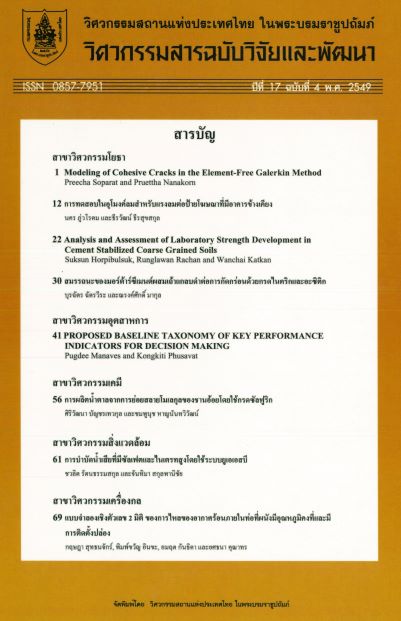PROPOSED BASELINE TAXONOMY OF KEY PERFORMANCE INDICATORS FOR DECISION MAKING
Main Article Content
Abstract
The research attempted to propose a taxonomy that helped relate the set of key performance indicators (KPIs) with a specific circumstance facing top management in a typical medium-sized manufacturing firm. This taxonomy was derived from the observations on the frequency of KPI requested by 9 executives from 3 companies in Thailand during January-December 2005. For this study, there were a total of 120 KPIs. They were mostly in the ratio format as advocated by Sink and Tuttle concept (1989). They were grouped into 4 perspectives, according to the Balanced Scorecard concept (i.e., finance, customer, internal business, and knowledge and learning). The companies integrated these KPIs into their own database/ management reporting processes. The frequency was collected, based on the management’s actual request numbers. To complete this taxonomy, these 9 top managers were asked to identify specific circumstances that their firms had experienced during the past 12 months. Based on the initial results, there were 18 common or general circumstances; e.g., high inflation, high interest rate, stronger competition, and market expansion opportunities. The next task was to match a scenario with a specific set of KPIs. This task generated the proposed taxonomy. For example, when being faced with the treat from new competitors, the top managers from the 3 companies generally paid attention to 2 customer-related KPIs (i.e., market share and % of customer lost), 3 financial-related KPIs (i.e., revenue-to-employee, profit margin, and Earnings Before Interest, Taxes, Depreciation, Amortization, and Restructuring or Rent Costs— EBITDAR), 2 internal process-related KPIs (i.e., inventory turnover and rate of productivity improvement), and one learning and growth-related KPI (i.e., investment in new product support and training). This proposed taxonomy had both potential benefits and limitations to be addressed later in the paper, including the effort on knowledge management.
Article Details
The published articles are copyright of the Engineering Journal of Research and Development, The Engineering Institute of Thailand Under H.M. The King's Patronage (EIT).


